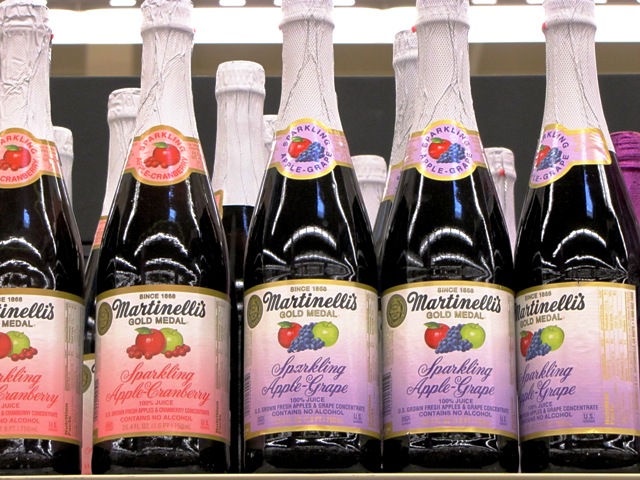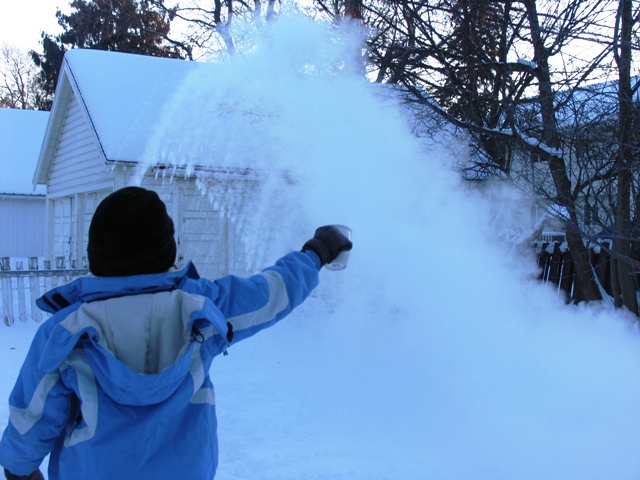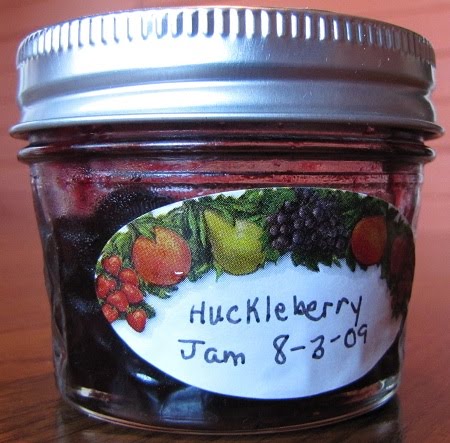How will we get the groceries home in the winter without them freezing solid? They’ll be in the bed of the pick-up truck exposed to the air! Won’t the cans of soft drinks burst? These were questions our southern brains used to ponder before we moved to the frozen north. Turns out the frozen north isn’t always in the deep freeze and getting our groceries home without them turning into frozen dinners has been a piece of cake.
So, what does it take to freeze food? I decided to do some research.
- Most foods without a high sugar content freeze solid at about 20 degrees Fahrenheit.
(My son in law kept at lot of these sparkling juices chilled outside our back door last Thanksgiving. The high temps were in the 40’s. Cold enough to keep things cool, but not cold enough to freeze.)

- Ice cream needs to be below 5 degrees F to stay solid.
(And though I’m thinking of stocking up on some Breyer’s Coffee Flavored ice cream, I do not intend to store it outside. Also, I only know of one store that carries it, and I don’t think I want to drive through blowing snow to satisfy a craving. I’ll settle for the hot apple cider that is warming in the crockpot.)
At this point, you’re probably wondering what is the best temperature is to keep your food really fresh and frozen for a long period of time.
- The answer is 0 degrees Fahrenheit.
________________________________________________
There’s more to do when you’re living in the deep freeze, than think about frozen food. You can make snow – or should I say – make MORE snow.
So much of the country is having an arctic blast and will be in the deep freeze, I’ve decided to re-post these instructions for “How to Make Snow”. Trying this experiment, might bring a smile to your face after you scrape the ice off of your windshield.

- E making snow in 2008
How to Make Snow
What you’ll need:
- a cold, dry day near or below 0° Fahrenheit
- a cup, preferably with a handle
- boiling tap water
Procedure:
- Heat some water to boiling. A microwave is good for this as you can heat the water in the cup.
- Go outside on a cold, dry day with temperatures near 0° Fahrenheit.
- Hold the cup tightly. With a large motion, toss the water at an angle away from you high into the air. Be careful not to toss the water straight up.
- Watch carefully as the water turns to snow and falls to the ground.
Explanation:
- The colder the air, the faster the freezing.
- The dryer the air, the faster water evaporates.
- Hot water evaporates more quickly than cold water.
- Evaporation causes a cooling effect which makes water freeze more quickly.
- Snow forms when tiny droplets of water freeze in the air.
Tips for best results:
- Make sure it’s a very cold, dry day. The catch is, when its cold enough to do this experiment, your pipes might be frozen!
- Use hot water! Hot water evaporates more quickly, so the cold air can freeze it faster.
- Throw the water up as far as you can, so the water has time to freeze on the way down.
- Use tap water, because it has the correct impurities to make it freeze, while distilled water is too pure. Ice crystals form around impurities. Tap water has more impurities, thus more crystals form.





One thought on “How to Make Snow”